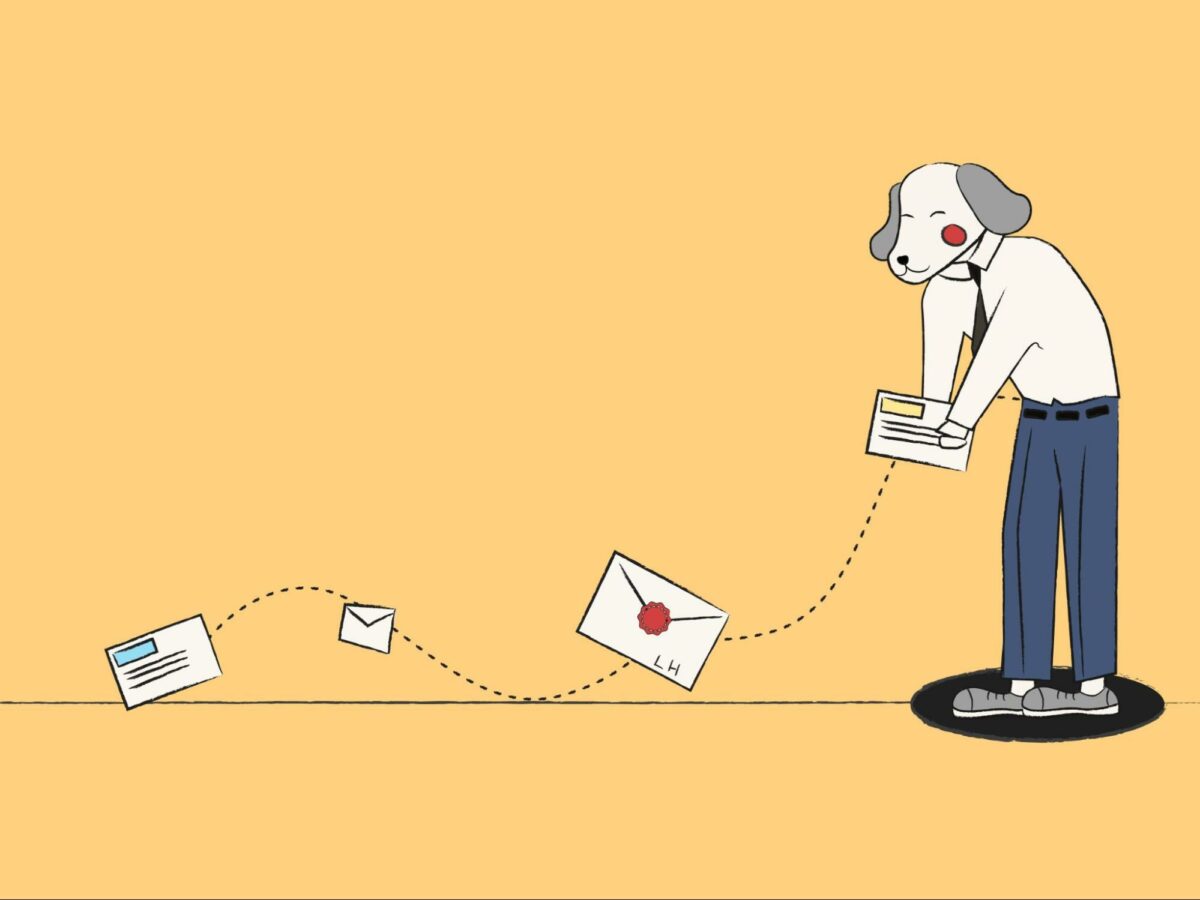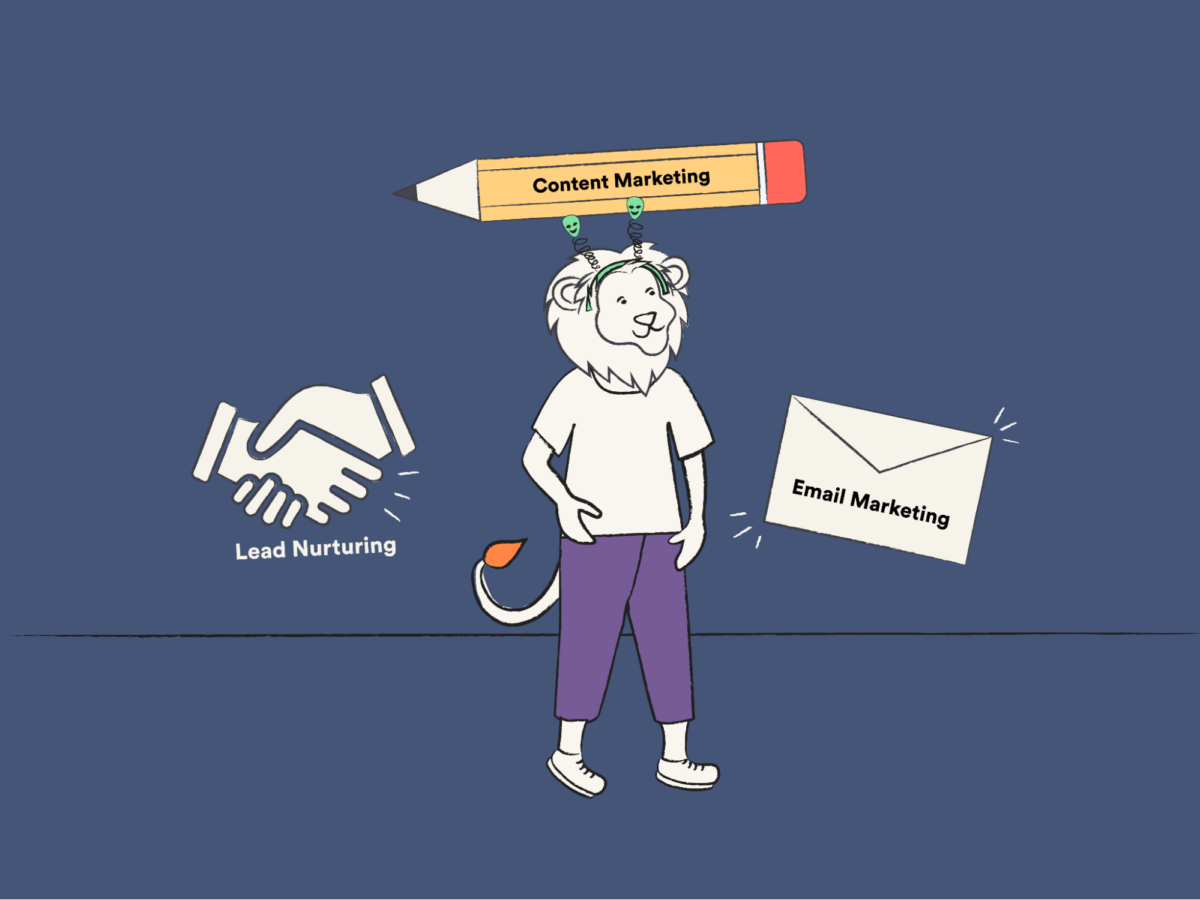It’s not uncommon for companies to lose out on growth opportunities with unopened emails and dead-end leads, but it doesn’t have to be that way. By targeting the right people at the right time, success is in your favor, and money will be saved on marketing efforts instead of wasted on them.
This is just the beginning; with automation software, companies face endless possibilities where creativity, efficiency, and loyalty pave the way to success.
Marketing automation has made itself at home in 79% of companies and continues to show why with its ability to totally change how organizations connect, engage, and nurture their audience. To fully comprehend what this technology is, how it’s used in real life, and the many benefits it brings, stay tuned.
What is marketing automation?
The thought of sending out endless personal emails at specific times, posting on social media, and deciphering complicated data sets is enough to stress out any marketing team. Not only is it incredibly labor-intensive, but relying on people to do such intricate marketing tasks over and over again is a recipe for disaster on all fronts.
In a perfect world, we would shift these jobs to someone who loved to do it and hit the nail on the head every time. Well, that’s what marketing automation is for. Marketers can be creative, imaginative, and strategic while the numbers are crunched behind the scenes like:
- Customer segmentation
- Lead scoring
- A/B testing
- Behavior tracking
- Predictive analytics
Marketing automation software is designed to help companies of any industry handle time-sensitive tasks that would otherwise be impossible. Not only that, automation can grow your business to new levels of success if you provide guidance.
There are numerous elements that go into marketing automation. It is an incredible innovation that has granted success to loads of companies in various industries.

Don’t expect it to do all the work, though. You still need a strong company foundation and brand identity before putting all your eggs in the automated basket. A brand identity will be the values and goals that influence future company decisions, so it goes without saying they are important.
7 Benefits of marketing automation
Simply put, you would struggle to find any cons of this technological innovation. It is so beneficial that 65% of marketers class their marketing automation strategy as “very effective” or “extremely effective.”
To see what all the fuss is about, check out the following seven benefits of using marketing automation.
1. Efficiency
You can only imagine the amount of time wasted on sending emails, scoring leads, and analyzing data. It leaves no room for the creative stuff that makes a real impact. With marketing automation workflows, tasks such as this are streamlined and allow for quicker results, making the whole process much faster.
2. Cost-effective
With fewer people needed for time-consuming, boring tasks, companies save a lot of money on hiring and training. Sure, you may have to pay for automation software subscriptions, but in the right hands, it will provide a return on investment (ROI).
As well as this, as automation tools tend to use artificial intelligence (AI), they are programmed to do specific tasks and, therefore, more accurately pinpoint where best to invest in marketing and lead nurturing.
Gone are the days when you throw money at hopeless endeavors; with marketing automation, every penny spent produces results.
3. Get better leads
As we mentioned, marketing automation is an expert in numbers, and lead generation is all about data collection and discovering which leads are the most important.
While you are focusing on creative, strategic campaigns, automation tools are busy analyzing information such as website visitors and social media interactions. This is to pinpoint who has the highest chance of converting into a paying customer, setting the sales team up for success.

4. Improved customer journey
Marketing automation is a must if you want customers to have a smooth customer journey. Through perfectly timed, personalized, automated emails to welcome and guide them, customer satisfaction and loyalty are improved.
Additionally, using automation integrations makes the segmentation process easier and more accurate as it is based on thoroughly calculated data. This allows you to send personalized emails to particular groups to increase the chance of conversions.
5. Accurate data analysis
Using data to drive business decisions is a significant element of success. But, if you were to focus on the wrong figures, calculate them inaccurately, or come to the wrong conclusion, it’s a one-way ticket to defeat.
This is not to say humans can be invaluable in data analysis, but with marketing, the numbers never end, and there is no wiggle room for slip-ups. With automation tools, you can rest easy knowing that each calculation is correct and the predictions compiled from them are worth listening to.

With accurate data analysis, each effort based on the findings isn’t wasted and, in the long run, avoids wasting money and losing existing customers.
6. Optimized marketing strategy
With clear insights into customer behaviors, preferences, and engagement patterns, content marketing efforts have a much higher chance of hitting the mark. Customer data compiled through automation tools influences certain messaging and methods of sharing them.
This is represented on marketing automation platforms like Customer Relationship Management (CRM) which manages and maintains customer data, interactions, and of course, relationships.
What’s more, measuring the success of your strategy is much easier with marketing automation. You can see how many emails were opened, what links were clicked, and other engagement metrics.
7. Increased conversion rates
Companies that use marketing automation tools see a 77% increase in conversion rates. This is an impressive figure but hardly surprising considering just how beneficial automation is.
With accurate data analysis, high-quality leads, and a personalized experience, customers will see value in being a part of your company and will stick with you through thick and thin.
12 marketing automation examples
Marketing automation can come in many forms, but here are the 12 most common ones you should make a note of and incorporate into your workflow.
1. Welcome emails
As someone living in the modern world, you have likely received a few welcome emails. They are triggered after a specific action, such as creating an account or making an order. Not every ecommerce company sends them, but they should because they are opened 91% of the time.
Welcome emails usually use warm, friendly language that shows they’re happy to have you on board. It’s also the prime time to introduce themselves as a brand, followed by all the great things they promise to offer you.

By automating this email, customers can get a warm welcome in their inbox almost instantly. It is important to be quick with this action as customers are most engaged within the first 48 hours of signing up.
2. Customer onboarding
As lovely as a welcome email is, it only goes so far in helping a new customer get acclimated to your brand. However, once companies engage prospects with a positive first impression, the onboarding can begin.
Onboarding is like a walkthrough for new customers. It helps them understand how the process works and clears up any questions they may have. There are many different forms onboarding comes in, such as videos or images.
An example of automated customer onboarding is when they sign up for software. It triggers the process via a website or email, which takes a step-by-step approach on how to use the software. The easier it is to understand, the better; you don’t want to scare them off with complex jargon.
Having an automated onboarding process ensures that no one is left scratching their heads and demonstrates you care about the customer experience. It’s definitely worth it, as 86% of customers will stick by you if there is a consistent onboarding process.
3. Re-engagement emails
It’s natural for customers’ priorities to shift to other things in life. Re-engaging customers is a big challenge, as there is a fine line between helpfulness and pushiness.
When a customer is inactive for a certain period of time in terms of clicks, email opens, and website visits, marketing automation software takes the opportunity to re-engage them. This can be done in multiple ways, including the following:
- Personalized recommendations: Enticing inactive users with products based on their preferences can pique their interest and encourage a purchase.
- Limited offers: Advertising a limited offer or coupon that is too good to refuse is a great way to sway inactive customers.
- Customer feedback: Sometimes, the best thing to do is ask why they aren’t engaging with the company anymore.
- Thought leadership: Have an interesting topic you think would get people talking? Share your exciting insights on hot topics to earn your place back on the radar.
4. Birthday promotions and offers
Sending an email on a customer’s birthday can increase the transaction rate by 481%. What’s more, it doesn’t even have to be very long. An intro on how you appreciate their business, along with some personalized new product recommendations and even a birthday discount, is ideal.
It’s a lovely surprise to see a birthday email, as it makes customers feel they are valued as individuals. Also, if the birthday discount is particularly good, then you can bet they’ll be looking forward to next year too.
5. Abandoned cart notifications
It’s a lot of fun to scroll through products and add what we like to the cart, but following through makes it more serious, especially when the grand total is higher than expected. Or, in some instances, it was merely a result of distraction.
Whatever the case may be, reminding customers of their cart abandonment is another example of marketing automation. If a few hours or days go by without completing a purchase, automation tools can send a gentle nudge to get the customer engaged again.
A tactful use of language advocating the products in the cart, as well as a link for easy access, is typically all it takes to complete checkouts and boost revenue as a result.
6. A/B testing emails
As well-prepared as your company may be, it’s unlikely that your email marketing campaigns are going to strike gold the first time around – and that’s okay! That’s not to say it isn’t impossible, though; all you have to do is try A/B testing.

In this instance, A/B testing is when you make various email templates and send them to your audience. Companies can gather which emails performed best based on metrics such as:
- Open rate: The percentage of recipients who opened the email.
- Click-Through rate (CTR): Those who clicked on links within the email.
- Unsubscribe rate: The percentage of recipients who unsubscribed from the email list.
- Conversion rate: The number of recipients who completed the desired action, like purchasing or signing up for a giveaway.
- Churn rate: Those who stop engaging with emails over a certain period.
Testing it this way is a lot less risky and, with the added convenience of email marketing automation, is an efficient way to avoid unsuccessful campaigns.
7. Feedback and reviews
There are countless benefits that come with gathering customer feedback. Techniques such as surveys, polls, and interviews are incredibly valuable as they are honest and highlight points worth focusing on to improve.
By automating this task, an email, SMS, or website pop-up can be triggered at a particular point in the customer journey. For example, it is best to ask for feedback after a customer has used your services rather than before.
As nice as it is to share opinions, customers will be more inclined to complete surveys if you give them an incentive. This could be a free entry into a prize draw or a discount on products.
However, that’s not all. The real challenge begins when all the data you collected has to be analyzed. Automation is able to make this job much easier by sorting through either quantitative or qualitative data and pinpointing trends, patterns, and anything that raises alarm.
8. Lead nurturing
When you have a potential new customer in your midst, lead nurturing is the umbrella term for methodical interaction to intrigue and retain them. This is so that when they begin at the start of the sales funnel, they are itching to get their hands on what you’re selling. It makes complete sense to automate this, especially if you are a large company with hundreds of thousands of customers.

As well as this, each user is at their own place in the customer journey and therefore requires personalized emails to be relevant. For example, someone who added a product to their shopping cart but left it there for a week would get an abandoned cart email. On the other hand, someone who purchased the software but hasn’t logged into it yet would benefit from an onboarding email.
These are all examples of lead nurturing, but it is not limited to this. Depending on the company, what it sells, and how it operates, lead nurturing’s primary goal is to make the most of each opportunity.
9. Drip email campaigns
Drip email campaigns are just that, they drip-feed content to specific audience segments. It is similar to lead nurturing in some ways, except for one main difference. Lead nurturing is guided by emotions to engage leads, whereas drip campaigns are a series of emails pre-determined and timed to be sent at particular moments.

Think of it as a step-by-step onboarding process that provides only the most relevant content at each stage of the customer’s journey. With a little bit of drip feeding here and there, users don’t feel like they’re being pushed into anything and will swiftly move through the sales funnel without a second thought.
It’s not all about making a sale, though. Drip email campaigns can simply educate them about the business and its products or provide insights into their company culture. The goal remains the same: to build trust and credibility among targeted users.
10. Social media management
Social media management can encompass B2C and B2B; it depends on the post’s intention. In terms of B2B, social media automation is incredibly valuable for being a thought leader and gaining new leads.
A thought leader is considered a go-to for knowledge, insights, and ideas in a particular field. Being one attracts lots of attention and showcases your expertise and reliability, letting followers know they are in good hands.
Having your social media automated is a no-brainer in this day and age. Scheduling posts promoting innovative company breakthroughs, case studies, and product benefits will save time and give you a consistent digital presence.
11. Lead scoring
If you have a lot of leads (yay!) but don’t know who to prioritize first, your next step is lead scoring. This ranks each potential customer on your email list on their likelihood of becoming a customer. This saves a lot of time spent on focusing on the wrong people and wasting money on dead ends.
This process is automated to collect and track crucial information about the interactions and behaviors of each lead across company websites or landing pages. Afterward, this is measured against personalized criteria, including the following:
- Engagement level
- Industry
- Job title
- Company size
- Location
As leads interact with the company in various ways, they accumulate points. The bigger the action, e.g., making an account or enquiring about a product, the higher their score will be.

Leads with the highest scores will be at the top of the priority list for the sales and marketing team. From here, they can work their magic and begin lead nurturing or drip email campaigns.
12. Invitations and follow-ups
Inviting clients, brand ambassadors, and supporters to company events is a great way to bring everyone together and hype them up about your mission.
Automating this procedure allows you to send particular invitations to segmented audience portions. This ensures that when you invite someone, you know they will get something out of it. As well as this, with software, you can see invitation open rates and click-throughs.
Company events can be anything from webinars to walkthroughs to product launches. They build customer relationships and take the company from a name on a screen into real life, encouraging people to be loyal and excited about participating in the journey.
After the event, sending out a follow-up to attendees provides insight into how they thought it went. It shows what you should continue doing for future events and what should be changed.
Automating your way to success
Let’s be honest, marketing is exciting but definitely not easy. There are multiple spinning plates in a marketing strategy that need full attention at all times, and as great as your marketing team may be, they’re not robots.
As customer preferences evolve as fast as technology advancements, staying ahead of the curve is important. Marketing automation makes this crucial step possible.










